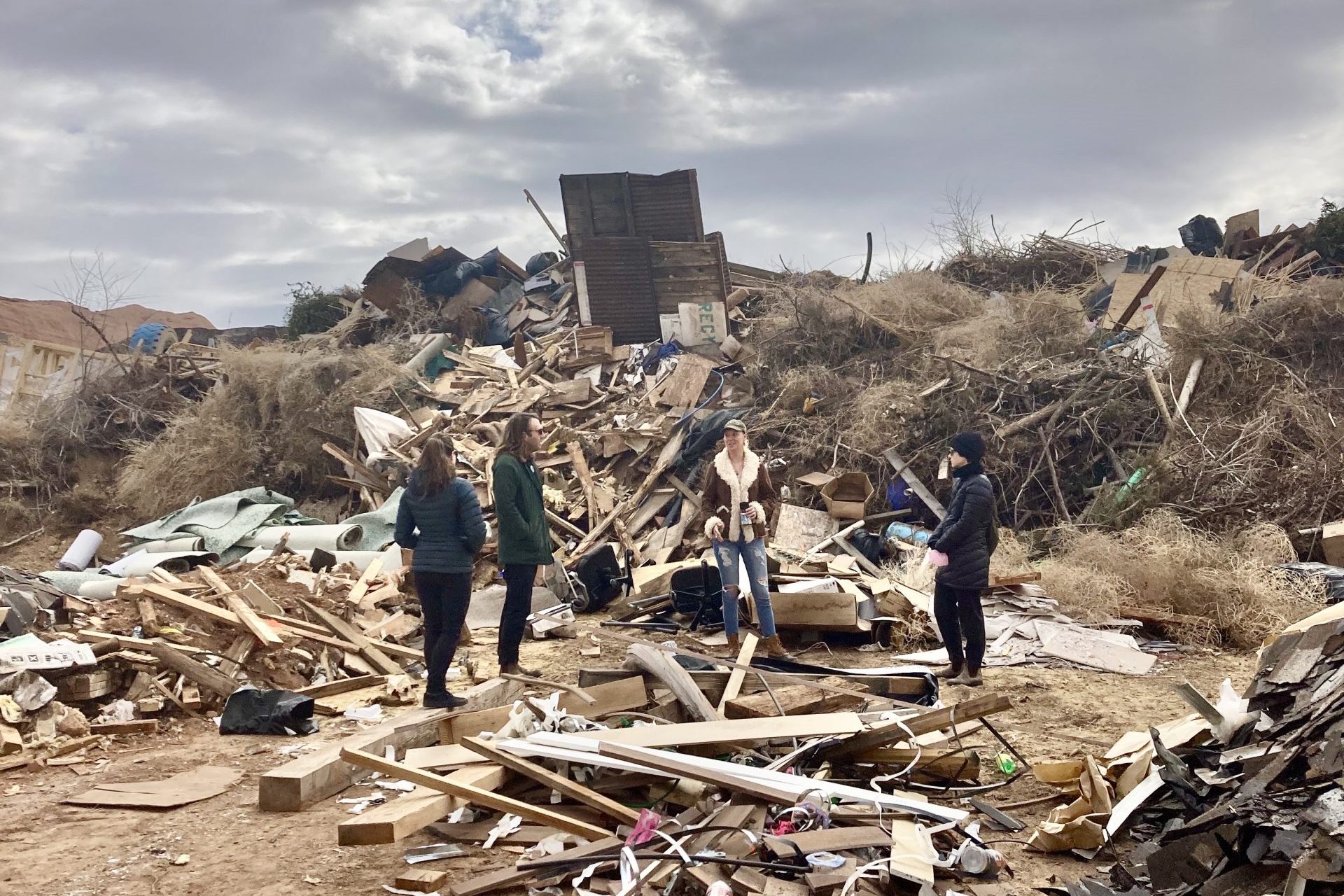Some information may be outdated.
Noémie Despland-Lichtert and Brendan Shea have—as they describe it—two completely different stories of how they met and formed their art partnership, Roundhouse Platform. Shea describes their meeting as an initial partnership to tackle a specific shared project; Despland-Lichtert describes their partnership in the longer term, a chance to create collaborative work together.
“Brendan is more formally trained as an architectural designer, and I was trained as a historian and curator,” she said. “A lot of the work we do is at the junction of urban history, architectural design, and art. The partnership of Roundhouse works as a curatorial platform but also a design practice.”
The two will be in Moab throughout the month of March as artists-in-residence with the Moab Arts Reuse Residency: a program created in 2021 with the mission to “challenge the perception of waste culture by providing a unique platform for artists at the intersection of art, community, and waste systems,” according to the Moab Arts website; artists use only materials from Canyonlands Solid Waste Authority and WabiSabi Thrift Store to create a final project. Last year’s artist, Justin Tyler Tate, created an interactive play sculpture that was installed at Lion’s Park.
Melisa Morgan, the assistant director at Moab Arts, said there were over 100 applications to the residency from artists all over the world. The Moab Arts team narrowed its selection of artists down by scoring them on creativity, project lifespan, skills, and community fit/engagement. Roundhouse Platform proposed a project that is “in essence, a natural building experiment,” Morgan said.
“We feel confident that there is a solid audience for their work here, which combines social engagement with architecture, pedagogy, and sustainability,” she said. “Brendan and Noémie are incredibly experienced creative people, having produced projects and lectures around the world, hosted various workshops and participatory experiences, taught at universities, and received numerous grants and awards. Their combined expertise and well-planned project proposal were outstanding.”
Despland-Lichtert and Shea have produced projects through Roundhouse Platform for years; in every project they create, they strongly rely on place-based culture and history to guide the final product, they said.
“The goal is always to uncover histories that have been erased or not included in the mainstream narrative,” Despland-Lichtert said. “These extensive site explorations lead to counter-narratives … I think having a richer, more complex understanding of the history of a place is always really interesting to me.”
“I’m interested in thinking about the materiality that we use in art and architecture,” Shea said. “A lot of those materials come from places we’re not super aware of.”
Despland-Lichtert and Shea spent their first week in Moab getting a feel for the town—they toured the landfill and recycling center, poked around WabiSabi, went to The Donut Shop. They plan on spending half their time building something in the studio, and the other half meeting the community. Despland-Lichtert remembers driving through Moab in 2015 on her way from Montreal to Los Angeles, and despite spending less than 24 hours here, it left an impression on her.
“Part of the plan is also to be here for more than 24 hours,” she joked. “We want to enjoy this place, meet the people, and create a design piece that’s responsive to the cultural context here.”
Toward that goal, the artists are hosting a workshop: on Monday, March 20, the public is invited to a three-hour workshop with Roundhouse Platform that will include a studio tour, creative drawing and modeling exercises, and a group discussion. The aspect of community engagement is especially important in the Reuse Residency, Morgan said: when the community can have a hand in what resident artists create, the work becomes better for it.
“I think the project will take multiple scales—from the scale of objects that represent themselves and that provide a snapshot of how waste cycles through town, moving into the bigger scales of models that are existing as an object but propose something much larger, like a building,” Shea said. “And then the workshop itself is an opportunity for an exchange of knowledge: this chance to capture histories by recording them might take another shape, like a video or book.”
“A lot of the work we do is site responsive,” Despland-Lichtert said. “… We don’t aspire to ever be exhaustive of all the cultures and communities of one place. But the goal is to be as inclusive as possible, and to reach out as much as possible.”
Appreciate the coverage? Help keep local news alive.
Chip in to support the Moab Sun News.





